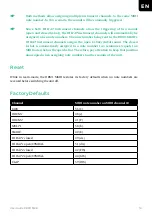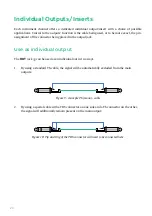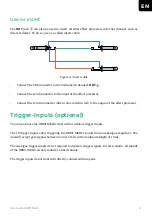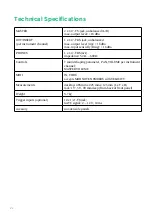
The Sound Generation
Now that you have carefully unpacked and setup the DRM1 MKIII, let’s take a closer look. Sorry for
bothering you with mainly theoretical and security aspects. To get the most out of this unit in a
creative and musical sense, this was necessary. Now, let’s find out what the DRM1 MKIII really is!
The DRM1 MKIII is a sound module, specialized to create synthetic drum sounds that are produced
by pure analogue circuits. It allows the creation of eight independent drum- and percussion sounds.
Although these sounds carry the component names of a traditional drum kit, these are “only”
imitations of the real thing. However, this is fully intended. Synthetic or analogue drums provide
an individual character and aesthetic. These sounds have significantly influenced different musical
genres if not made them possible at all. Neither old school Hip-Hop, Electro, House nor Techno
would have been possible without the aid of the famous analogue drum machines invented by our
friends from Japan.
The DRM1 MKIII has a lot to offer. It covers many aspects of those classic units but also a lot
more. But one thing can certainly be said. The DRM1 MKIII is all original and not a clone, trying to
reproduce 8 or 9 classic sounds.
Let’s take a closer look at the individual drums, consecutively referred to as
instrument channels
. At
the same time, we will also name possible applications for their use.
All eight instrument channels in the DRM1 MKIII share three elements:
TRIG
This button manually triggers the instrument channel’s sound. Here, the volume
is constant and equals the level at 2/3 of maximum MIDI velocity. Note: For
instrument channels
HI HAT 1
and
HI HAT 2
, these offer an additional choice of
sounds (see "HI HAT 1/HI HAT 2" on page 15).
PAN
this control adjusts the instrument channels’ position in the stereo panorama when
using the main-
⑨
and headphone outputs
⑦
. Note that
PAN
has no effect on the
instrument channels’ individual outputs
⑤
.
VOLUME
this control adjusts the instrument channel’s volume for the main-
⑨
, headphone-
⑦
and individual outputs
⑤
.
9
User Guide DRM1 MKIII
EN




























